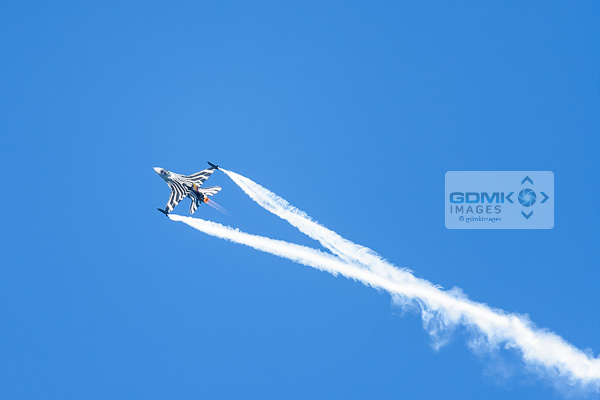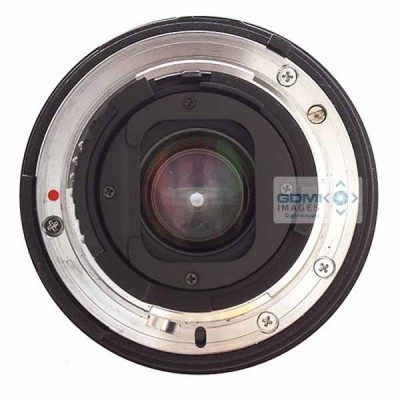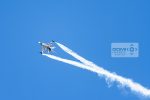Nikon D7200 v D300 One Month Later

[vc_row][vc_column][vc_column_text]
Nikon D7200 v D300 hands on opinion
I have owned the D7200 for just over a month now. This article aims to provide information to those wondering if the new Nikon D7200 can genuinely be considered as a D300 replacement (*update 06/01/16 – Nikon D500 released as D300 replacement*). There has been a lot of discussion about Nikons latest DX format DSLR camera. Many are unhappy that there has been no signficant upgrade over the D7100. Whilst this viewpoint may be somewhat justified, this article is aimed at people who haven’t recently upgraded their Nikon bodies. There is a significant population of photographers who have been waiting for the almost mystical D400 to replace the well respected Nikon D300. Many havent upgraded their camera bodies despite several iterations of Nikon DX format DSLR cameras being released. I purchased my Nikon D300 a couple of weeks after initial release just over 7 years ago. Camera sensors, image processors and AF capabilities have significantly improved in that time. Those who have used the D300 will agree with me that it is an extremely capable, robust and solid camera. Indeed, the D300 has been such a good camera that none of the recent releases have been a match for its capabilities. Newer cameras may have improved components and features but none have offered the overall package offered by the D300. A compromise in capability was always required to move away from the D300 – until now. I have been following the stories and rumours about a Nikon D400 for some time. As time goes by it seems less and less likely that this much anticipated camera will ever make an appearance. With this in mind, the Nikon D7200 caught my eye when Nikon announced its release. The D7200 feature list addressed most of what I needed in a camera body. I researched many articles to try and understand the full feature set of the D7200. After handling an example at the ukphotoshow, I took the decision to finally give in and upgrade. This article is written on the basis of my experiences moving from the D300 to the D7200.[/vc_column_text][/vc_column][/vc_row][vc_row][vc_column][vc_column_text]
Does size matter?
The first obvious feature of the D7200 camera body is its smaller size when compared to the D300. The size difference is not massive but is noticeable. The D7200 is as comfortable in the hand, and is lighter, but you do notice the smaller size. In the side by side photos shown below you can see the size difference of the Nikon D7200 v D300 when viewing from above, the front and rear.[/vc_column_text][/vc_column][/vc_row][vc_row font_color=”#00478c”][vc_column][vc_gallery type=”image_grid” images=”27205,27206,27207″ img_size=”full”][/vc_column][/vc_row][vc_row][vc_column][vc_column_text]The photos above illustrate the size difference but also show the many changes to the cameras controls. Most notable on the top view is the D7200s Mode Dial in place of the D300s dedicated Quality, ISO and WB buttons. The rear view shows a smaller Multi Selector pad on the D7200. You can see the focus area, meter area controls and dedicated AF-ON button controls are missing. I was concerned the removal of these buttons inferred that Nikon had removed key functionality. The D7200 still offers all the D300s functionality, and more besides, albeit the functions are accessed via different controls. Consequently, there is quite a learning curve as you adjust to using these common functions. I will admit to suffering from a bit of frustration as simple operations, that were once instinctive actions, have had to be re-learnt.[/vc_column_text][/vc_column][/vc_row][vc_row font_color=”#00478c”][vc_column][vc_gallery type=”image_grid” images=”27211,27210″ img_size=”full”][/vc_column][/vc_row][vc_row][vc_column][vc_column_text]
Nikon D7200 Ergonomics
There are two ergonomic issues I didn’t immediately like about using the D7200. I have to ask why certain simple actions have changed. The two images above illustrate my first dislike. The release dial on the D300 requires the index finger to operate the release button and a twist of the dial with your thumb. The D7200 design has reversed this meaning the thumb releases the dial button and the index finger twists the dial. For whatever reason this just does not feel as comfortable. Many times my index finger has been groping in vain for the release button. When I realise and try to release with the thumb it just feels weird. Secondly, the rear Multi selector pad is smaller on the D7200 and doesn’t have that smooth operation of the D300. The pad is also bulkier and just feels less precise in operation. Other than these two issues, the ergonomics of the D7200 are not too bad. Much of the ergonomic issues I have encountered result from having ingrained muscle memory from using the D300.[/vc_column_text][/vc_column][/vc_row][vc_row][vc_column][vc_column_text]
Nikon D7200 Operation
After getting past the size and different button arrangements, your next noticeable difference comes when you look through the D7200s viewfinder. You will see that the Focus Mode, Exposure Mode and ISO speed readouts (see update below) are missing. I really dont like this aspect of the camera and do not know why these features are missing. This camera is aimed at semi-pro and advanced amateur photographers, so why remove such a useful facility? The visual representation of this information in the viewfinder is a must have feature in any ‘advanced’ camera. You want to keep the camera to your eye and visual reminders in the viewfinder are crucial. Tsk tsk Nikon – dont think you can release a D7200b or D7250 to cover up for this omission because that wont wash. Back to comparing the D7200 to the D300. Every aspect of the cameras operation has changed and there is a fair learning curve in getting to grips with these changes. I guess this is expected considering the changes that have taken place with camera technology since the release of the D300. The new mode dial brings a lot more functionality to hand quickly. The displaced D300 buttons have been moved and relocated onto the cameras rear panel. The new dial on the D7200 allows quick access to some very useful functionality and I feel is an improvement.[/vc_column_text][vc_column_text]**Update**
I need to make a slight clarification in regard to viewfinder display information. Following Rods comment below, I double checked the viewfinder readout and found the ISO was showing.
This was enabled by using ‘Easy ISO’ mode in the custom menu settings. When Easy ISO mode is enabled, you control the ISO setting with your thumb on the rear command dial. Also, lo and behold, it enables ISO readout in the viewfinder.
Apologies for this oversight and I hope it hasn’t mislead too many people. I only recently dabbled with the Easy ISO mode and never noticed the correlation between the viewfinder readout and this mode.
**[/vc_column_text][/vc_column][/vc_row][vc_row][vc_column width=”1/2″][vc_column_text]
The AF modes are a little confusing at first and will take a little time to adjust to. Your familiar 3 way C, S, M AF switch (Continous, Single, Manual) is replaced with a 2 way AF and M switch with a new central button. Essentially you now only choose either AF or M with the toggle. To access the differing AF modes, you hold in the new central button and select the AF mode with the Sub Command dial. To change the AF matrix configuration, hold in the button and rotate the Command dial. Throw in a new AF mode to the mix (AF-A which automatically selects between AF-S or AF-C depending on subject movement) and you have a rich recipe for confusion. If your chosen field of photography needs frequent swapping of focus modes and matrix configurations then you need to get out in the field and practice, practice, practice before you go to an important shoot!
Located above the AF Mode selector switch is a new Bracket button. The D7200 bracketing options have increased over the D300 giving you more creative flexibility.
One unexpected factor I noticed is the D7200s operation speed. I didnt notice this until I went out with both cameras (tele on the D7200 and wide angle on the D300). The D300 was noticeably slower in general operation and when firing off a series of shots. The D7200 has received criticism for its burst mode and poor high speed shooting capabilities. All I can say is when shooting 6 or 7 consecutive shots, the D7200 is noticeably faster than the D300 in getting those 6 or 7 shots off. I always regarded my D300 as perfectly capable for getting off continous sequences so am pleasantly surprised by this discovery.[/vc_column_text][/vc_column][vc_column width=”1/2″][vc_gallery type=”image_grid” images=”27209,27208″ img_size=”full”][/vc_column][/vc_row][vc_row][vc_column][vc_column_text]
Nikon D7200 Customisations
There is no denying it – the Nikon D7200 is a complex bit of kit. With this complexity comes a generous number of customisation options. Almost every button and function can be customised to tweak almost every camera mode. With a little time and experimentation, you can customise your own D7200 to become a highly personalised tool honed to your photographic niche. The trusty ‘My Menu’ option, whereby often used menu options are added to your own menu for quick access, is still available. Added to this are the two user settings, U1 and U2, on the mode dial. You can set very specific camera functionality and store it in one of two user slots. You can then quickly swap between these settings by moving the dial to U1 or U2 and load the settings. This is useful if you swap between two subjects that need different camera operation – for instance swapping quickly from fast sports photography to macro photography. Each of those scenarios need differing settings and these user slots make multiple setting changes very easy.[/vc_column_text][/vc_column][/vc_row][vc_row][vc_column][vc_column_text]
Nikon D7200 Ruggedness
The D7200 does not have the full armouring and water resistance of the D300. Many have commented that this is an obvious omission by Nikon. I have to agree somewhat, but also in the 7 and a bit years of owning a D300, I never dropped my camera to test its actual ruggedness. I will handle the D7200 with the same care so (fingers crossed) I wont have need to see how robust or brittle the newer camera is. As for weatherproofing, well I got caught in a monstrous rain shower on the Charles bridge in Prague. I am happy to say the D7200 and my lenses survived perfectly well. If the camera survived this downpour then I have no worries going forward in respect of weatherproofing.
A short clip from the rainstorm is shown below.[/vc_column_text][/vc_column][/vc_row][vc_row][vc_column][vc_video link=”https://youtu.be/q1CjwQpNHOI”][/vc_column][/vc_row][vc_row][vc_column][vc_column_text]
Nikon D7200 New Features
As mentioned the D7200 offers many new technologies and features that weren’t available at the D300s release. It goes without saying that the D7200 hardware is a significant upgrade over that employed in the D300. The sensor is a far more capable 24mp device as opposed to the original 12mp sensor. The image processor is 3 generations newer and the AF module is extremely capable. In short, and without getting into the technical intricacies of each component, the sensor, AF and image processing is very good. Moving on to the new features I particularly like some of the additions. I like the new quiet shutter mode. The cameras operation doesnt become silent, but is somewhat quieter for those situations where noise may be an issue. The AF-A mode could be interesting. To be honest I like to have direct control over the AF mode. I select either single servo or continous servo depending on the subject matter. I will experiment with this new AF-A mode to see if it is reliable and accurate enough to correctly identify subject movement. One feature I really like is the wireless control via mobile phone. The mobile app is available for both Android and Apple devices via their respective app stores. Once downloaded, you can connect the D7200 and mobile device via wireless and control the camera via Live View. The app will display the scene seen through the viewfinder and gives you the ability to trigger the shutter from your phone. This is perfect when the camera is placed in awkward positions and may save you a few aches and pains! The app has more functionality and is a great addition. One other feature that I like is the delayed shutter mode. You can select a predetermined time for the shutter to operate once the mirror has raised. This is ideal for those circumstances where the slightest camera movement may affect the sharpness of your image.[/vc_column_text][/vc_column][/vc_row][vc_row][vc_column][vc_column_text]
Is the D7200 really the D400?
From my viewpoint, the D7200 probably isnt the D400 per se. Having said that, the Nikon D7200 is an extremely competent and feature rich camera that I am sure will satisfy anyone waiting for Nikons next real move in the ‘semi-pro’ and ‘pro-sumer’ niche. The upgrade in sensor, AF Module and image processor is enough alone to justify my decision in upgrading to a D7200. Add in the features I discuss above and you have at hand an extremely competent camera. A camera that is capable of delivering top quality images coupled with an extremely useful range of features. Features that are customisable to such a degree that you can create a fine tuned instrument honed to your particular photography niche.
It may not be the D400 but the Nikon D7200 is definitely the camera I have been waiting for. Of most importance to me is the change to the D7200 hasnt compromised any of the capabilities my D300 provided. I now have an exceptional main camera and an extremely competent and proven back up. If the D400 never materialises then I have an exceptional camera that will serve me just fine for a long time. If the D400 does ever appear, then it will need a genre breaking feature set priced somewhere around the £1500 mark for me to even consider dropping the D7200.
I’m beginning to the think the D7200 has made the Nikon D400 irrelevant. The D7200 is set to serve me well for a long time and my next upgrade may not be the D400 at all, but a step up to Full Frame – now that is a completely different kettle of fish!
I hope this article has been informative.
I’d love to hear your views, so why not leave a comment below?
Thanks Gary[/vc_column_text][/vc_column][/vc_row][vc_row][vc_column][vc_separator color=”sky” el_width=”70″][/vc_column][/vc_row][vc_row][vc_column font_color=”#00478c”][vc_cta h2=”Subscribe to GDMK Images” h2_font_container=”color:%2300478c” h2_google_fonts=”font_family:Arimo%3Aregular%2Citalic%2C700%2C700italic|font_style:400%20regular%3A400%3Anormal” h4_google_fonts=”font_family:Arimo%3Aregular%2Citalic%2C700%2C700italic|font_style:700%20bold%20regular%3A700%3Anormal” txt_align=”center” color=”sky” add_button=”bottom” btn_title=”Sign me up I want to know about new GDMK Images articles” btn_align=”center” style=”outline” btn_style=”outline” use_custom_fonts_h2=”true” use_custom_fonts_h4=”true” btn_button_block=”true” btn_color=”sky” shape=”round” btn_shape=”round” btn_size=”md” btn_link=”url:http%3A%2F%2Fstaging.gdmkimages.co.uk%2Fsubscribe-gdmk-images-newsletters%2F||”]Be the first to know when new GDMK Images articles are available[/vc_cta][/vc_column][/vc_row][vc_row][vc_column][vc_column_text]
If you liked this article then why not share it with someone you know who will also find it interesting …. thanks![juiz_sps buttons=”facebook, twitter, google, pinterest, digg, linkedin, stumbleupon, mail”]
[/vc_column_text][vc_row_inner][vc_column_inner width=”1/6″][vc_facebook type=”button_count”][/vc_column_inner][vc_column_inner width=”1/6″][vc_googleplus][/vc_column_inner][vc_column_inner width=”1/6″][/vc_column_inner][vc_column_inner width=”1/6″][/vc_column_inner][vc_column_inner width=”1/6″][/vc_column_inner][vc_column_inner width=”1/6″][/vc_column_inner][/vc_row_inner][/vc_column][/vc_row][vc_row][vc_column][vc_column_text]
Related Posts …..
[/vc_column_text][ess_grid alias=”photography-news”][/vc_column][/vc_row]











